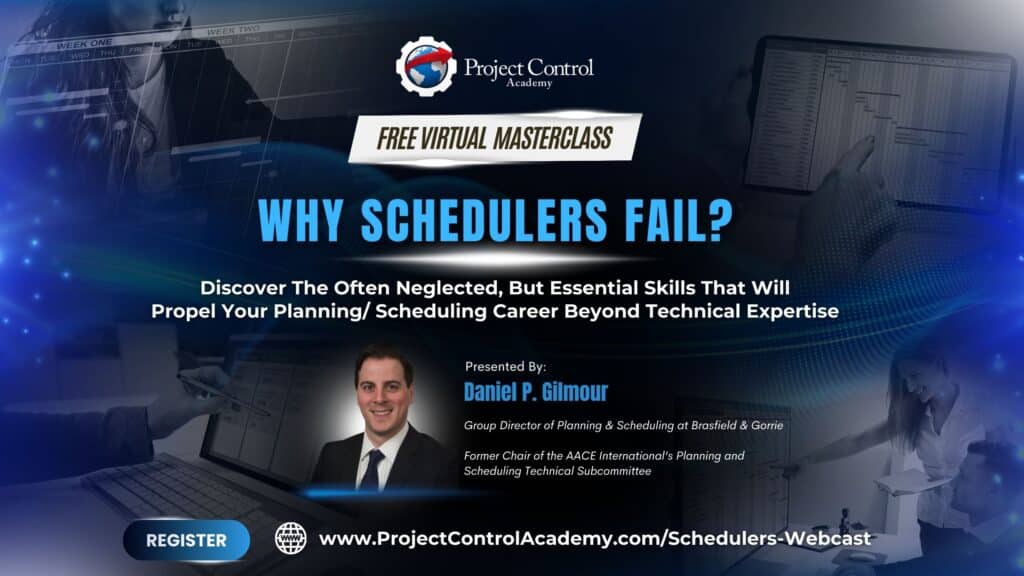Cost estimate reviews are necessary for any owner for design phase estimates to ensure there is no budget overrun later. Owners would like to confirm that their design goals are realistic, and they have adequate money in their estimate that will reflect the intended project scope. AACEI’s (Association for Advancement of Cost Engineering International)Recommended Practice on cost estimating and budgeting, states, ‘A structured, if not formal, review process is a best practice’ [1].
In-house estimators may be reviewing owner’s estimates prepared either in-house or prepared by external consultants for various projects. In addition to internal cost estimate reviews, owners also send estimates to consultants for external reviews to check accuracy and make decisions accordingly.
The reviewing estimator may not need to provide an independent estimate but expected to perform the following:
- Check if the estimate is compatible with the project scope
- Identify completeness of estimate and make sure that there is no missing scope or inconsistencies
- Confirm if the estimate assumptions and basis are appropriate
- Assess the correctness of quantities (at least for major items)
- Validate unit rates, and make certain the markups applied are adequate and reasonable
Using a checklist may help the reviewer to perform efficient qualitative and quantitative analysis. Key questions that may be included in the list and the various checks necessary for effective cost estimate reviews are discussed in this post.
Is the Estimate Issued with a Basis of Estimate (BOE)?
After checking if all supporting documents like drawings, specifications, scope narratives, etc. are available for review, the next thing is to see if the estimate is presented with a BOE (Basis of Estimate). Before even delving into the numbers, the reviewer should verify if any BOE was prepared or not and ask for it if it is missing.
–Despite the talk in the industry about the importance of Basis of Estimate, still, you may find many estimates being issued without a BOE —
A good BOE will help the reviewer to understand the thought process, and rationale behind the estimated numbers, clarifying the design basis, cost basis, assumptions, inclusions, and exclusions in an estimate. If there is a BOE, see if it answers questions that the reviewer may have.
If BOE is available, verify that the information described in the BOE is applied in the estimate and any discrepancies are to be highlighted in the review report.
Does the Estimate follow a Cost Model?
A cost model is an organized breakdown of cost into parts, typically by Building systems or CSI (Construction Specification Institute) divisions.
Instead of CSI breakdown, some owners may require estimates to be prepared using their own estimating format or WBS (Work Breakdown Structure). For example, they may want to see the cost for different disciplines like Structural, Architectural, Geotechnical, Mechanical, Electrical, etc. or subtotaled per contractor’s trade packages. They may also want to see breakdowns for different project areas, phases, buildings, funding sources, and so forth.
Check if the estimate is prepared using the required cost model and estimate summary is traceable to supporting details. Perform a quality check for math or formula errors in estimates prepared using spreadsheets.
While soliciting bids, the owner may like to get pricing for some items as an ‘Alternate’ in the bid. An Alternate is an addition or deduction from the base scope. These items are separated for pricing in the bid and using Alternates offers the owner the flexibility of choosing items to adjust the budget. For example, if the base scope has carpet as the floor finish, owners may like to have wood flooring as an add alternate. Another example is, an expensive light fixture may be in the base scope and the owner may like to have a less expensive light fixture as a deduct alternate. If the estimate involves ‘Alternates’, confirm there is no overlap or duplication between the Base estimate and Alternates.
Are Quantities Accurate and Pricing Reasonable?
Quantities
For validation of quantities and prices, the depth of review may depend on the size of the project, its value, and its complexity. It may be possible to check all items for a smaller project, but when it comes to larger projects, it is good to follow the Pareto’s law according to which 80 percent of the cost may lie within 20 percent of items. So, doing take offs and spot checking quantities of some major items may be sufficient instead of drilling down every item.
Prices
For checking prices, analyze the Labor, and Material breakdown if available. If the provided estimate includes only composite unit rates, build up composite rates for major items and test few items to see if it is reasonable. If any unit rate adjustments are required, include in the review report those specific items, showing how rates are to be adjusted. Also, indicate roughly how these adjustments will impact the estimate total.
If there are vendor price quote backups, verify if the quote includes the right scope and the cost included in the estimate is inclusive of required markups.
Check against cost metrics, thumb-rules, benchmark costs, and actual costs (if available)
Some activities of the project may need to be done during overtime hours, over weekends or on a 24/7 schedule. Examples of projects that involve overtime work include track outages in transit projects, road\lane closures, and traffic control. For the duration of these activities, you should expect a low productivity effort. Check if premiums allowed for such activities are adequate.
Markups
Markups are added to direct costs to cover general conditions, overhead, profit, insurance, bonds, contingency, and escalation. Check if markups are reasonable. Ensure if design contingency and construction contingencies are appropriate. Check if the escalation percentage is based on any industry publications like ENR (Engineering News Record) or other publications and if any adjustment is made to those values, whether it is acceptable.
Allowances
Allowances are for items that are intended in the design but are not clearly defined. Examples are an allowance for dewatering, signage allowance, allowance for abatement, and allowance for MEP (Mechanical Electrical, Plumbing)
During the conceptual estimating, in some cases, drawings or specifications may indicate design allowances to be included in cost estimates. For example, rebar allowance as pounds per cubic yard of concrete or structural steel quantity to be assumed as pounds per square footage of floor area. The Owner may also indicate dollar amounts for inclusion in the estimate as an allowance such as allowance for abatement, allowance for the cost of furniture in a fit-out work, etc.
Make sure required allowances are included in the estimate.
Are there Intangibles that could impact the estimated numbers?
Beyond the qualitative and quantitative reviews of the estimated numbers, there may also be other intangibles that could impact the estimated numbers. For example, the reviewer may add comments if he or she finds the project schedule is aggressive and not realistic.
CD (Construction Documents) estimate is prepared with 100% design drawings and specifications before the project goes out for bid. In addition to reviewing and validating the estimated total cost, the reviewers may also add comments if they find items as given below.
- If bid packages and trade groupings are complex
- Sole sourcing of materials that may impact the price
- Owner’s insisting on pre-qualified subcontractors that may contribute to an increase in bidder’s price
- Risk items that may affect the cost
- Any other bid constraints
Will the Project Delivery Method Necessitate a Change of Contingency or Allowance?
In a traditional Design Bid Build procurement, design contingency is made zero in CD estimates. , whereas, it is different for other types of procurements. While reviewing estimates of projects done with alternative project delivery methods like Construction Manager at Risk (CMAR), and Design-Build (DB), the reviewer may note that the estimate is done with incomplete design to fast-track projects. It is important to see that allowances and contingencies for the relevant divisions of the estimate are accurate. Some owners may also like to combine constructability review and estimating, to ensure there is enough construction contingency, before a GMP (Guaranteed Maximum Price) contract is signed.
Preparing Review Reports
The intent of an estimate review is to confirm the quality and accuracy of the estimate and see if the estimate reflects the right scope. The reviewer should prepare a report with the observations and findings and highlight cost impact if adjustments are made according to the findings.
The review report should help the owner in making the necessary modifications in the estimate.
If it is a CD estimate, review findings may be useful in bid evaluation, price negotiation, and award of the contract.
According to AACEI’s Recommended Practice, “Cost estimate reviews and documentation is a step in the cost estimating and budgeting process of the Total Cost Management (TCM) Framework” [1]. As it is an important step during design phase estimating, establishing good cost estimate review procedures will enable quality reviews and eventually lead to improvement in the quality and accuracy of an estimate.
References:
- AACEI – Recommended Practice No. 31R-03, May 12, 2009
About the Author, Ramani Sundaram

He has published an article in AACEI’s Cost Engineering Journal and has written many technical articles on the LinkedIn pulse and on other platforms. His prize-winning blog is posted on Project Control Academy’s website.
Ramani is a Board member and Certification Director in AACEI’s NJ section. He is a Certified Cost Professional (CCP), Certified Estimating Professional (CEP), Project Management Professional (PMP) and a Member of RICS (MRICS).
He can be reached at his LinkedIn Profile.





![[Free 90-min Masterclass] The Ultimate Leadership Recipe for Project Professionals](https://www.projectcontrolacademy.com/wp-content/uploads/2024/08/4-1024x576.jpg)















